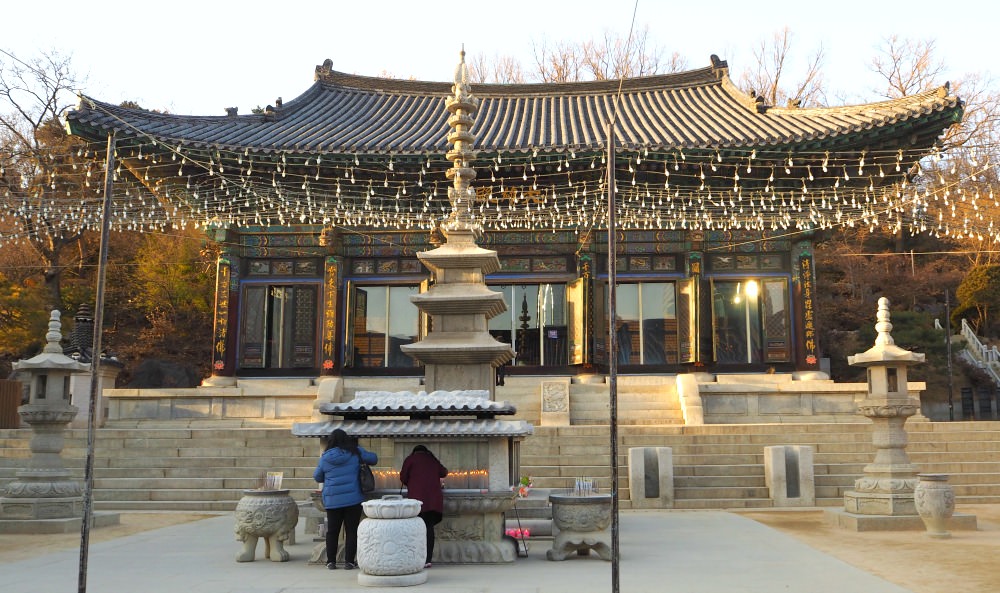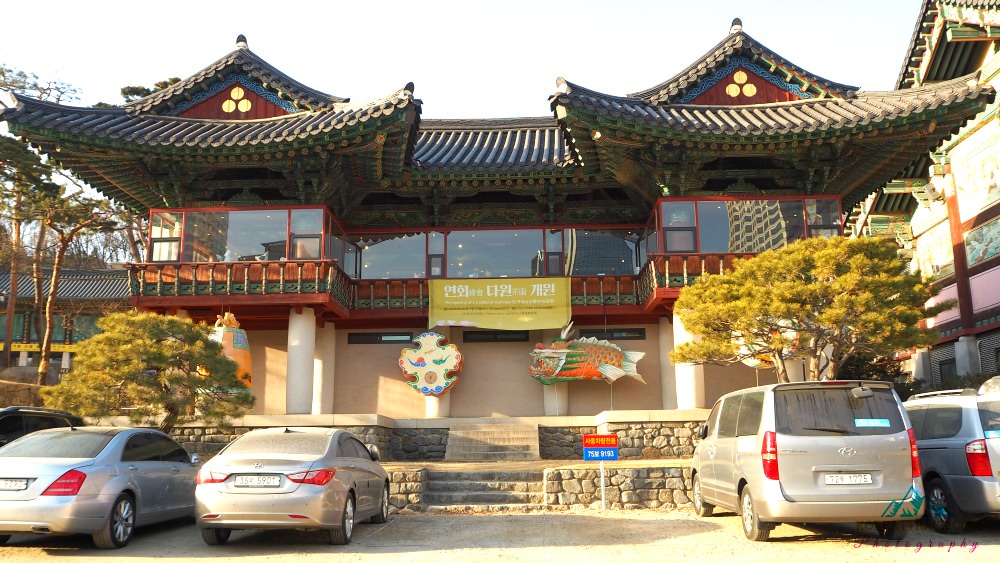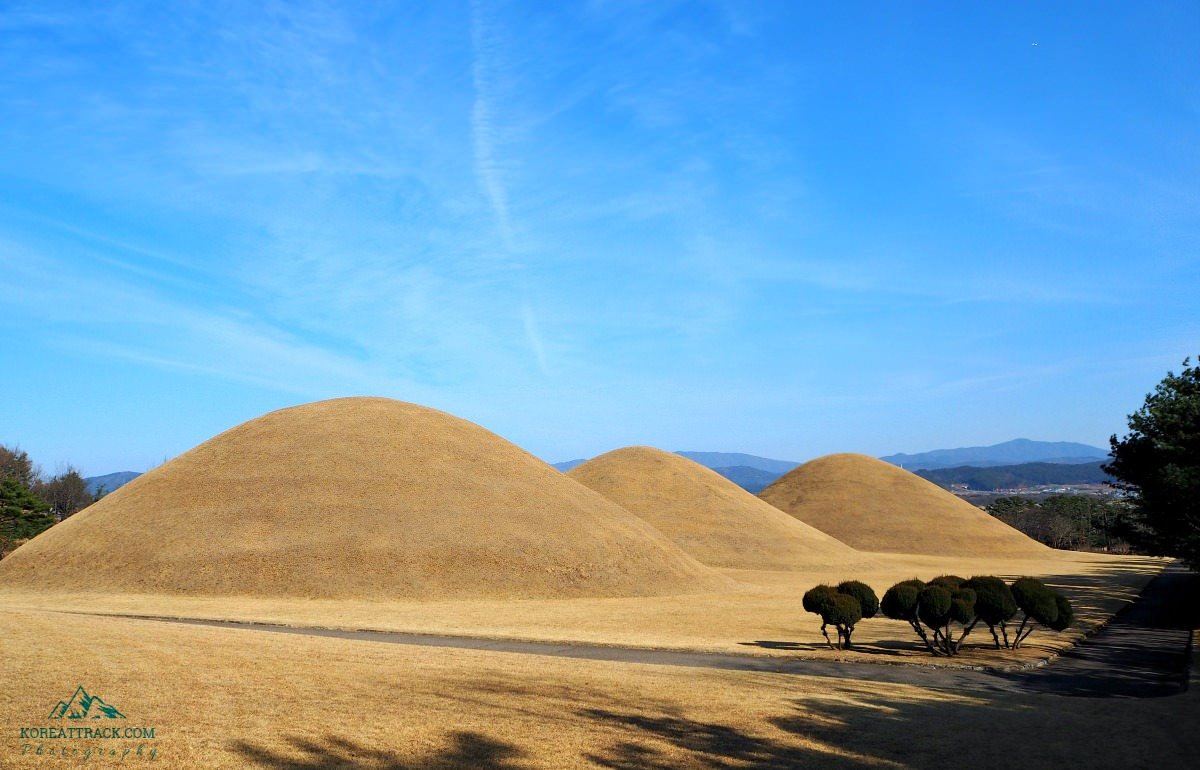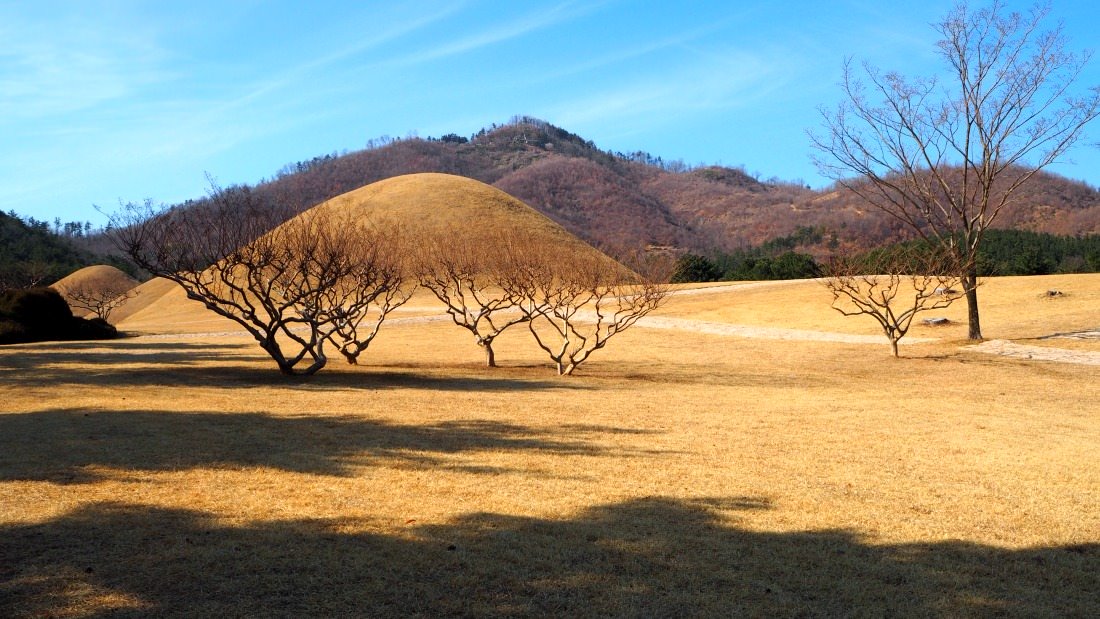Seonjeongneung Royal Tombs
in Seoul
 The tomb of King Seongjong at Seonjeongneung Royal Tombs in Seoul near Seolleung Station.
The tomb of King Seongjong at Seonjeongneung Royal Tombs in Seoul near Seolleung Station.Seonjeongneung Royal Tombs in Seoul
Seonjeongneung Tombs is the name given to both Seonneung (pronounced as 'seolleung') and Jeongneung tombs. The name refers to the royal burial places of King Seongjong (the 9th king of the Joseon Dynasty) and Queen Jeonghyeon (the second wife of King Seongjong), and King Jungjong (son of Queen Jeonghyeon).
Seonjeongneung Royal Tombs in Seoul is enlisted in the UNESCO World Heritage list. Besides, the tombs site is also designated as Historic Site No. 199 by the Korean government.
It is excellent for a quiet time and relaxation space for family, friends, or as a lone traveler. Photography is ideal due to the picturesque milieu of the burial area.
Although the Joseon Dynasty tombs pretty much look the same in design, what makes them distinguishable are the surroundings, size and elevation of the tombs, sculptured stones around the tombs, and the serene environment among other features.
Usually, kings have higher elevation and wider mounds besides the number of granite sculptures (figures of animals, scholars, generals, etc.).
On the other hand, the queens and other royals lower than the king, have mounds or tombs made simpler than that of the kings.
 Seonjeongneung - King Seongjong's Tomb Mound
Seonjeongneung - King Seongjong's Tomb Mound![Seonjeongneung (Seolleung and Jeonneung) Royal Tombs - Queen Jeonghyeon's Tomb [mound] seonjeongneung royal tomb queen jeonghyeon mound](https://www.koreattrack.com/images/xseonjeongneung-royal-tombs-queen-jeonghyeon-mound.jpg.pagespeed.ic.4-fjcc2M63.jpg) Seonjeongneung (Seolleung and Jeonneung) Royal Tombs - Queen Jeonghyeon's Tomb [mound]
Seonjeongneung (Seolleung and Jeonneung) Royal Tombs - Queen Jeonghyeon's Tomb [mound]Seonjeongneung Tomb can be accessed quickly via subway from Seoul or anywhere near the Korean capital city. It is close to Seolleung Station of Subway Line 2. Check it out!
South of the tombs is a single T-shaped shrine which was typical during the Joseon-era royal tombs burial method.
King Seongjong's first wife, Queen Han, died at age 18 and was entombed near Munsan, north of Seoul.
 Daeungjeon Hall at Bongeunsa Temple, Seoul
Daeungjeon Hall at Bongeunsa Temple, SeoulThe king's second spouse, Queen Jeonghyeon (1462–1530), from the Yun family, was entombed here because she gave birth to the king's second son (the future King Jungjong) in 1506.
Queen Jeonghyeon had a profound faith in Buddhism and established the nearby Bongeunsa Temple (above). Bongeunsa (pronunciation: bong-eun-sa) Temple is located just across COEX mall in Gangnam District, another popular tourist destination.
Brief Background
 Seonjeongneung Royal Tombs in Seoul. Tomb of King Jungjeong.
Seonjeongneung Royal Tombs in Seoul. Tomb of King Jungjeong.Queen Jeonghyeon revealed a dream that she should be buried along with him. But this desire was never carried out. This unfulfilled dream made the king's burial place stands alone.
As Seolleung and Jeongneung were excavated during the Japanese intrusions of Korea during the Joseon Dynasty, the bodies in both Seongneung and Jeongneung could not be found in the three tombs.
Jeongneung is more uncommon as only the ashes were discovered in the tombs of King Seonjeong and Queen Junghyeon, but the bodies of the deceased in Jungjong were found.
To figure out whether or not this corpse came from King Jungjong, they conducted a study from the senior to the heads of the court.
A couple of people remembered his appearance since he had died a long time back. And it was troublesome to validate the fact that the rest of them were aged too.
The records and the dead body were different. And it was in the hot summer season when Jungjong passed away. But the reality was that the body was still intact.
Some questions have indeed been raised. Some thought that the Japanese army had kept the burial place for the sake of the deceased.
People could not quickly conclude because it might have been Jungjong's body. Eventually, Seonjo bought the body to be buried elsewhere.
 Tea House at Bongeunsa Temple that offers free cup of tea to all visitors!
Tea House at Bongeunsa Temple that offers free cup of tea to all visitors!Getting to Seongjeongneung Tomb
Let me share with you the options to get to Seonjeongneung Royal Tombs in Seoul...
From your point of departure anywhere with the Seoul Subway line or Incheon Line (or other latest lines), take the subway that serves Line 2 and Bundang Line.
Get off at Seolleung Station, named after Seonjeongneung, Joseon Dynasty royal tombs Seolleung (선릉, 宣陵) and Jeongneung (정릉, 靖陵).
Seolleung Station, LINE 2, is between Yeoksam Station and Samseong Station. On the Bundang Line, Seolleung Station is also between Seonjeongneung Station and connecting with LINE 9, and Hanti Station.
Since the burial site is surrounded and within the shopping district and accessible area, you can quickly move around and see more exciting places, including Gangnam and Apgujong districts.
Useful Information to Visitors
Inquiry: +82-2-568-1291; Fax: +82-2-568-0773
Website: korean royal tombs
You can choose from the following languages on the website: Korean, English, Chinese, Japanese.
Operation Time: Open from Tuesday to Sunday except on special holidays.
Mar - Oct 06:00 - 21:00 (Last Entry 20:00)
Nov - Jan 06:30 - 17:30 (Last Entry 16:30)
Feb 06:00 - 18:00
Visitors are not allowed in after 8 PM. Only places with lights are accessible during the evening time.
Entrance Fees:
Locals from age 25-64: 1,000KRW; 800KRW for more than 10 people
Foreigners from 19-64: 1,000KRW; 800KRW for more than 10 people
Foreigners from 7-18: 500KRW; 400KRW form over 10 people
Facilities Available at the Burial Area
Baby Carriage Rentals
Guided Tour: more than 10 people will be accepted, but a reservation should be made. Phone: 02-568-1291.
Parking Area is available. From February to October, parking is allowed from 6 AM up to 9 PM only. From November to January, parking starts from 6:30 AM up to 5:30 PM only.
The parking fee is 400KRW for every five minutes. Additional 600KRW charges incur for parking over two hours per five minutes.
I hope you will visit and enjoy this historical and relaxing place within the Seoul area. Thanks for reading!
- Home
- Seoul Attractions Best
- Seonjeongneung Royal Tombs
Get Exciting Activities
Book one of our exciting activities today to experience the thrill of a lifetime! Take advantage of this opportunity and secure your spot in advance.
Hotel Map Guide
Find your affordable, accessible, and comfortable hotel in Seoul at Agoda.Com. See the hotel map below...
Hotel Booking Guide
Find affordable and amazing hotels on Agoda.com using the search box below. Book now to enjoy great discounts and save!







New! Comments
What do you think about this page? Leave me a comment in the box below.